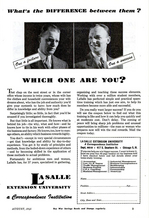The Latest from Boing Boing |  |
- Harmonographs
- LaSalle Extension University, snail-mail generations' University of Phoenix
- Paper art: 100 extraordinary examples.
- FDA notice: LSG SkyChefs, the guys who make plane food, have vermin in Denver
- Turmoil in Tehran: a recap
- MMX
- Taste Test: Ginkgo nuts
| Posted: 02 Jan 2010 04:19 AM PST   One of my favorite series in print comes from Wooden Books. They are beautifully designed and printed books on various esoteric topics. My favorite in the series is Anthony Ashton's Harmonograph, a visual guide to the mathematics of music. The harmonograph was a popular 19th-century parlor pastime that created art similar to a Spirograph, but with a much wider range of variables. Ashton purchased one and illustrated his book with it. He also gives a history of math and music dating back to Pythagoras, and includes schematics for building your own harmonograph. You can generate them by computer these days, but there's something hypnotic and amazing about watching one in action. The Wooden Books website lets you browse the series for free for 20 minutes a day, but if you're like me, you will want to experience the tactile pleasures of these lovely little pieces of art. The whole series is first-rate! One of my favorite series in print comes from Wooden Books. They are beautifully designed and printed books on various esoteric topics. My favorite in the series is Anthony Ashton's Harmonograph, a visual guide to the mathematics of music. The harmonograph was a popular 19th-century parlor pastime that created art similar to a Spirograph, but with a much wider range of variables. Ashton purchased one and illustrated his book with it. He also gives a history of math and music dating back to Pythagoras, and includes schematics for building your own harmonograph. You can generate them by computer these days, but there's something hypnotic and amazing about watching one in action. The Wooden Books website lets you browse the series for free for 20 minutes a day, but if you're like me, you will want to experience the tactile pleasures of these lovely little pieces of art. The whole series is first-rate! |
| LaSalle Extension University, snail-mail generations' University of Phoenix Posted: 02 Jan 2010 03:04 AM PST  Look who's smiling now: this ad helped generate $440 million (in 2010 dollars) in just one year. Look who's smiling now: this ad helped generate $440 million (in 2010 dollars) in just one year.Correspondence schools took root in the United States after the University of Chicago began an innovative home study course for non-resident students. This inspired copycat businesses, and the granddaddy of them all was La Salle Extension University. In 1908, founder J.G. Chapline set up offices a few blocks from University of Chicago and began trading on their good reputation, often running ads right next to theirs in Cosmopolitan, Pearson's, National Geographic, Popular Mechanics, etc. LaSalle offered a valuable service that helped many people. In segregated America, LaSalle offered opportunities for many African-Americans who might have had problems matriculating at their local schools. Many hard-working people with full-time jobs, including future governors, congressmembers, and senators, obtained degrees from LaSalle. LaSalle's most controversial program, their at-home bachelor's degree in law, was their greatest success, but also led to their eventual downfall in 1979. Between its meteoric rise and its decline and fall, LaSalle became the template for both University of Phoenix-type distance learning schools and diploma mills. Like modern academia, a big part of the revenue involved selling overpriced books authored by instructors, so Chapline set up his own publishing company and recruited established authors to write textbooks. The result was remarkable. By the time the Federal Trade Commission stepped in during the 1970s to curb industry excesses like diploma mills, LaSalle had well over 100,000 active enrolled students and was clearing $75 million annually (over $440 million adjusted for inflation). Their aggressive direct response ad campaigns converted about 20% of inquiries. I pulled a few examples from their ad campaigns.
Money poured in, and LaSalle began to refine their message as advertising got more sophisticated. Ads became about setting oneself apart from competitors: "Are You the Ten-pin --or the Ball?" or "The Only Way Out of a Pit-- --UP!" quoting Jack London (noting he was "penniless and with only a scanty education" when he uttered this). One insidiously clever ad from 1930 was targeted at bosses, advising that a great way to blow off raise requests was to suggest the underling enroll at LaSalle and come back when he was done.
Alas, all the ads in the world could not help them escape the FTC, who sued them for misrepresentations about obtaining law degrees through a correspondence course. Following further litigation, LaSalle finally folded in 1980. Out of the ashes of the regulatory firestorm during the Carter Administration, a new challenger appears, rising like a... well, a phoenix. The University of Phoenix, founded in 1976, took over where LaSalle left off, eventually making the leap into the digital age. Their aggressive advertising uses the LaSalle model and has been even more successful than LaSalle: their holding company Apollo Group (NASDAQ:APOL) clears about $3 billion a year. I created a Flickr set of LaSalle ads for those interested. This piece is based on several articles I originally wrote for Wikipedia. |
| Paper art: 100 extraordinary examples. Posted: 01 Jan 2010 02:15 PM PST  Above, the work of Jen Stark. And 99 more lovely examples of paper art in this post at Web Designer Depot (via Chris Watson) |
| FDA notice: LSG SkyChefs, the guys who make plane food, have vermin in Denver Posted: 01 Jan 2010 02:00 PM PST |
| Posted: 01 Jan 2010 01:59 PM PST Cyrus Farivar: "In case you've been hiding out in a post/continuing holiday stupor, Iran is going nuts." Related: Moussavi speaks. |
| Posted: 01 Jan 2010 08:43 AM PST |
| Posted: 31 Dec 2009 12:44 AM PST  I love ginkgo nuts. They have a nutty, ever-so-slightly bittersweet flavor and a punchy-soft texture reminiscent of jelly beans that is, in my experience, quite unmatched by other nuts. They're also beautiful to look at — tiny egg-shaped beads that are a pale yellow when raw and take on a translucent, golden-green glow when cooked. When I was in elementary school in Tokyo, my friends and I used to walk past a really stinky ginkgo biloba tree. The stink is one of the reasons why the trees aren't seen near busy streets in the US, even though it's the oldest tree specie in the world. When you buy ginkgo nuts, they usually come shelled, with a light brown casing. The easiest way to prepare them is to fill a frying pan with oil, just enough to cover the nuts, and cook for about three minutes until they're shiny and translucent, and the brown casing starts to fall off. Make sure you pat away excess oil with a paper towel before serving, and sprinkle some good coarse salt on them. My aunt prepared the ginkgo nuts in this picture for dinner last night. My brother and I both love them, so we immediately started popping them in our mouths. Then my mom and aunt both told us that we shouldn't eat more than 10 at once. My mom said it was bad for digestion; my aunt said it would give us nosebleeds and make us stupid. I wasn't sure if this was just folklore if there's some scientific truth to it, but my brother and I both counted back, stopped at 10, and saved the rest for later.* As a supplement, ginkgo biloba extract is thought to improve blood flow and memory. Ginkgo contains antioxidants, which gets rid of free radicals in the body that can contribute to heart disease and cancer. *Later, I found that my mom and aunt's warnings were in sync with side effect warnings that accompany ginkgo biloba extract. I'm sure the chances are low, but as with everything else in life, moderation is the key to staying healthy. Every installment of Taste Test will explore recipes, the science, and some history behind a specific food item. Previously: |
| You are subscribed to email updates from Boing Boing To stop receiving these emails, you may unsubscribe now. | Email delivery powered by Google |
| Google Inc., 20 West Kinzie, Chicago IL USA 60610 | |






No comments:
Post a Comment